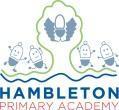
Word Reading
Understands the five concepts of print:
-Print has meaning
-Print can have different purposes
-We read English text from left to right top to bottom
-The names of the different parts of a book
-Page sequencing
Develop their phonological awareness so they can:
-Spot and suggest rhymes
-Count or clap syllables in words
-Recognise words with the same initial sound, such as money and mother
Read individual letters by saying the sounds for them.
Blend sounds into words, so that they can read short words made up of known letter-sound correspondences
Read some letter groups that each represent one sound and say sounds for them.
Read a few common exception words
Read simple phrases and sentences made up of words with known letter–sound correspondences and, where necessary, a few exception words
Re-read these books to build up their confidence
Apply phonic knowledge to decode words (phase 5)
Recognise 40+ phonemes speedily
Pronouncing the same grapheme in a range of ways.
Read common exception words.
Split two or three syllable words into separate syllables to support blending.
Read words with contractions
Read more challenging texts using phonic and common exception word recognition.
Blend sounds in unfamiliar words
Read books aloud accurately that are consistent with their phonic knowledge
Develop fluency, accuracy and confidence when re-reading books.
Continue to apply phonetic knowledge
Read alternative sounds for graphemes.
Read words with two or more syllables accurately
Read aloud books matched to their phonic knowledge
Sounding out unfamiliar words correctly without hesitation.
Read high frequency words without overt blending.
Read longer less familiar texts independently.
Read words containing common suffixes
Read further common exception words (noting unusual correspondence).
Develop fluency, accuracy and confidence when re-reading books
Use knowledge of root words to understand meaning.
Use prefixes to understand meaning
Read and understand selected words from Y3 list
Use dictionaries (first two letters) to check meanings of words.
Use knowledge of root words to understand meaning of new words
Use prefixes to understand meaning.
Use suffixes to understand meaning
Read and understand selected words from Y4 list.
Use dictionaries (first three letters) to check meanings of words.
Use knowledge of root words and suffixes to understand meanings
Read and understand selected words from Y5 list
Recommend texts to their peers with reasons
Use etymology to help pronounce new words
Read and understand selected words from Y6 list
Recommend books to their peers with detailed reasons
Comprehension and Understanding
Enjoy listening to longer stories and can remember much of what happens.
Know many rhymes, be able to talk about familiar books, and be able to tell a long story.
Engage in extended conversations about stories, learning new vocabulary.
in word reading and fluency
Say a sound for each letter in the alphabet and at least 10 digraphs
Read words consistent with their phonic knowledge by sound-blending
Read aloud simple sentences and books that are consistent with their phonic knowledge, including some common exception words
Understand how to listen carefully and why it is important.
Learn and use new vocabulary throughout the day
Describe events in some detail
Engage in story times
Listen to and talk about stories to build familiarity and understanding
Develop pleasure in reading by:
- listening to and discussing a wide range of genres at a level beyond which they can read independently
- being encouraged to link texts to their own experiences
- becoming familiar with key stories, retelling them and considering their characteristics
- recognising and joining in with predictable phrases
- learning to appreciate rhymes and poems, and to recite some by heart
- discussing word meanings, linking new
Develop pleasure in reading by:
- listening to, discussing and expressing views about a wide range of genres (beyond what they can read) independently
- Discuss the main events in stories
- Discussing the sequence of events in books and how items of information are related - becoming familiar with and retelling a wider range of stories, fairy stories and traditional tales - being introduced to non-fiction books that are structured in different ways
Sequence main events of a story in a range of ways and discuss main points. Orally retell stories and engage the audience. Identify and discuss specific conventions of genres.
Clarify the meaning of unfamiliar words in context.
Prepare a poem learn by heart and perform.
Demonstrate enthusiasm –confidently sharing enthusiasm about books
Orally retell myths from other cultures with dramatic use of voice and actions
Collect effective words and phrases from texts.
Explain key vocabulary and within the context of the text
Prepare a poem learn by heart and perform ensuring the meaning is clear.
Clarify new vocabulary.
Indicate parenthesis
Use active reading strategies
Draw inferences about characters’ motives and justify referring to characters’ thoughts and feelings
Prepare a poem with annotations to support planning and rehearsals.
Clarify new vocabulary.
Demonstrate active reading strategies
Justify opinions by referring to the text PEE.
Infer motives from characters’ actions with evidence
Predict consequences
